#valdemar i of denmark
Explore tagged Tumblr posts
Text
Love this family with all of my heart🥹❤️🩹

Group photograph of the family of King Christian and Queen Louise of Denmark at Fredensborg Palace, 1884.
The Princess of Wales wrote to her son George about the happy occasion.
💌 29th August 1884
"I need hardly to tell you how delighted I am here in my dear old home, & now we are all 6 together! for the first time since I married - all of the sisters & brothers have been flocking in gradually... So you may imagine my delight... We are indeed a merry, happy party now. First of all there is darling Amama & Apapa - who look really quite the youngest of us all; then Minny & Sacha with 5 children, Willy & Olga with 2 girls, Freddy & Louise with 6 children, Old Mother dear with 3 girls! Thyra with 3 chicks!! & Waldemar with none at all!!!!
Royal Collection Trust / © Her Majesty Queen Elizabeth II 2022
#queen alexandra#alexandra of denmark#king george i of greece#king christian ix of denmark#queen louise of denmark#louise of hesse-kassel#empress maria feodorovna#dagmar of denmark#princess thyra of denmark#crown princess thyra of hanover#prince valdemar of denmark#king frederick viii of denmark#danish royal family#letters/diary entries/quotes
44 notes
·
View notes
Text




Happy 22nd birthday to Felix, Count of Monpezat!
Born on 22 July 2002, Felix Henrik Valdemar Christian is the younger son of Prince Joachim and his first wife, Alexandra, Countess of Frederiksborg. Felix is currently seventh in the line of succession to the Danish throne.
In 2018, he began his secondary education at Gammel Hellerup Gymnasium, making him the first member of the Danish royal family to attend a non-private upper secondary school.
Originally known as "His Highness Prince Felix of Denmark", Felix assumed the style "His Highness Prince Felix of Denmark, Count of Monpezat" on 29 April 2008. In 2022, Queen Margrethe I decided to strip the descendants of her son Joachim of their princely styles. From 1 January 2023, Felix is known as "His Excellency Count Felix of Monpezat".
14 notes
·
View notes
Text




Prince George of Greece and Prince Valdemar of Denmark
This is a departure of my usual interest in the British Royal Family, but I am curious if many people know about the apparent incestuous relationship between Prince Valdemar of Denmark (Queen Alexandra's brother) and his nephew Prince George of Greece.
Prince George was sent to Denmark to live as punishment for bad behavior. His uncle Valdemar took interest in him and formed a close bond. According to both of their wives later on, this relationship was incestuous.
Both princes were very popular in their family, who seemed to have no idea of what was really going on.
Can someone add more information? I have seen this a few times and couldn't believe it was true, but recent articles that quoted Marie Bonaparte, Prince George's wife, changed my mind.
#british royal family#brf#queen alexandra#king george v#george v#George of greece#Valdemar of Denmark
14 notes
·
View notes
Text


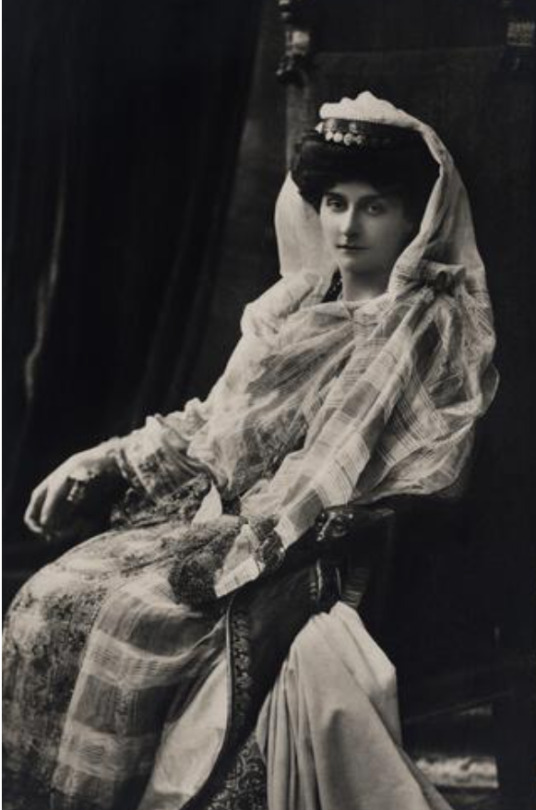
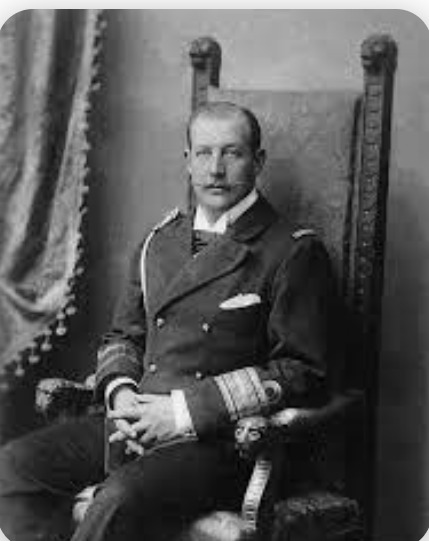

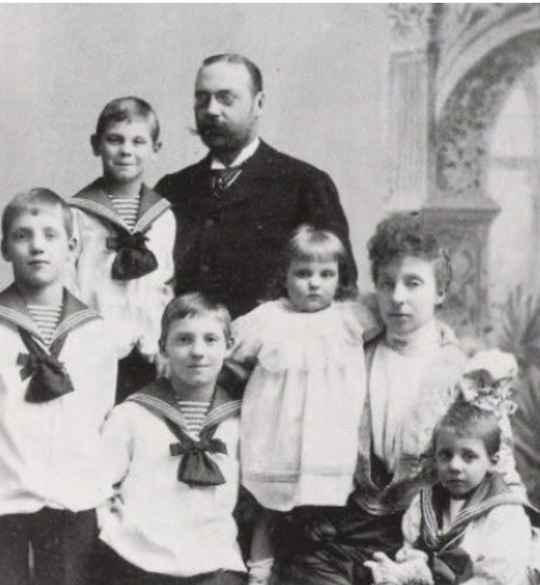
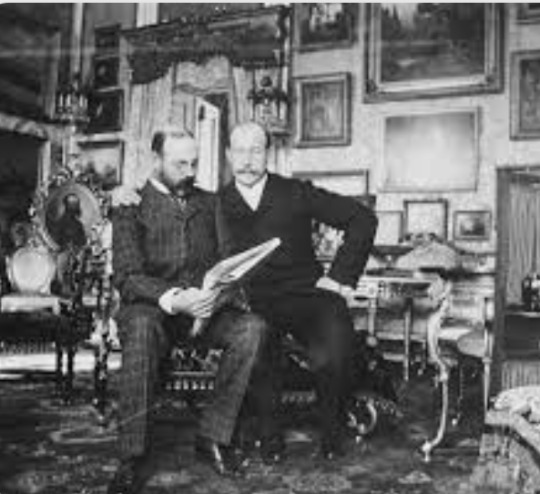

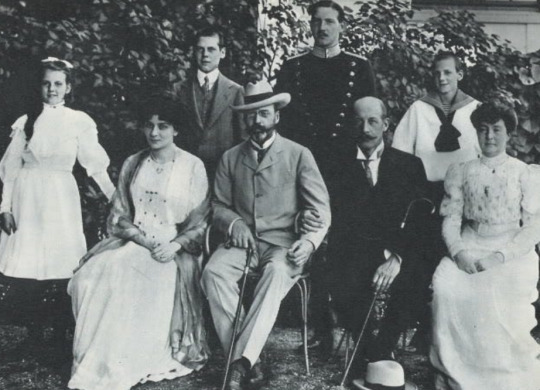

Photos: 1. Prince Waldemar of Greece; 2. Marie de Orleans, wife of Prince Waldemar; 3. Marie Bonaparte, wife of Prince George of Greece and Denmark; 4. Prince George of Greece and Denmark; 5. Prince and Princess George of Greece and Denmark and their children Prince Peter of Greece and Denmark and Princess Eugenie of Greece and Denmark; 6. Prince and Princess Waldemar of Greece with their children: Prince Aage Count of Rosenborg, Prince Axel of Denmark, Prince Erik Count of Rosenborg, Prince Vigo Count of Rosenborg, Princess Margrethe of Denmark. 7 and 8: Prince Waldemar of Greece and Prince George of Greece and Denmark; 9: Sitting: Marie Bonaparte, Prince Waldemar, Prince George, and Marie de Orleans surrounded by some of their children; 10. Prince Waldemar and Prince George
Sometimes, the love story is where you least imagine it...
Prince Waldemar of Denmark (1858 -1939) and Prince George of Greece and Denmark (1869 - 1957)
Prince Waldemar of Denmark was the youngest son of King Christian IX and Queen Louise of Hesse-Kessel. Waldemar entered the naval college as a young man in 1879. He was passionate about the navy and had a lifelong naval career; he was Vice Admiral and Admiral of the Danish Fleet. He married Princess Marie of Orleans, a granddaughter of King Louis Phillipe of France; they had four sons and one daughter and remained married until Marie's untimely death. Marie was a very intelligent and unconventional woman, and her life needs to be told at greater length.
Prince George of Greece and Denmark was the second child of George I of Greece and his wife, Grand Duchess Olga Konstantinovna (the Queen of the Hellenes); Prince Waldemar was George I's youngest brother. Therefore, Waldemar was George of Greece and Denmark's uncle. When George I and his wife decided to enroll their son in the Naval college, they took George to live with Waldemar, an admiral in the Danish fleet. George developed a great attachment for his uncle, which continued until Waldemar's death. (Prince George of Greece and Denmark was the cousin who went on Tsarevich Nicholas' European tour and ran to his rescue when Nicholas was attacked in the streets of Japan.)
George of Greece and Denmark married Marie Bonaparte, a very unconventional, wealthy woman who at one point was a disciple of Sigmund Freud and who became a psychotherapist. They had two children and remained married until George's death. She is another woman who deserves a book to herself.
When George married, Waldemar came along on his honeymoon. George would often return to his uncle’s palace for visits. At the end of these visits, George would weep while Waldemar would grow ill, both dreading the pending separation from each other. To their own credit, both French Maries respected the oddly close relationship between uncle and nephew.
Waldemar and George flawlessly fulfilled their military and dynastic duties to their countries. Their wives learned to cope with the unusual situation. They were always well-loved by their extensive families and included in all activities of their many European royal relatives.
George of Greece died at eighty-eight, surviving Waldemar by 18 years. When Waldemar died he had been devastated and found great comfort in his wife; the couple's last years together were their best. George was buried at the Greek Royal burial grounds at Tatoi. He requested to be buried with his wedding ring, a lock of hair from Valdemar, a photo of Valdemar, and earth from Valdemar’s palace. His widow honored this request.(gcl)
Were Valdemar and George more than just nephew and uncle? Perhaps. Were they involved in a strong and loving relationship? Undoubtedly.
Sources:
Lea. (2021, October 29). An odd royal relationship. Medium. https://worldroyals.medium.com/an-odd-royal-relationship-6a405ca16320#:~:text=George%20felt%20abandoned%20by%20his,in%20love%20with%20his%20uncle.&text=When%20George%20reached%20adulthood%2C%20he,%2C%20Catholic%20princess%2C%20Marie%20Bonaparte.
#European history#Danish history#Greek history#Prince Valdemar of Denmark#Prince George of Greece and Denmark#Marie Bonaparte#Marie of Orleans
21 notes
·
View notes
Text
MARRIAGE OF KING HAAKON VII AND QUEEN MAUD OF NORWAY🥺🤍💍
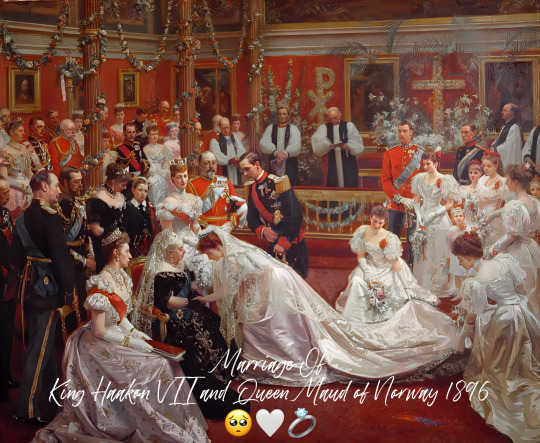
Prince Carl, the second son of then-Crown Prince Frederick of Denmark and Princess Louise of Sweden, was born at the Charlottenlund Palace on August 3, 1872 and was christened Christian Frederik Carl Georg Valdemar Axel. Maud, meanwhile, was the youngest daughter of Albert Edward, Prince of Wales (later King Edward VII) and Princess Alexandra of Denmark. Both Frederick and Alexandra were children of King Christian IX of Denmark.
At a young age, Carl was not expected to become king because he was a second son. So, he built a career in the military, where he served as a naval officer at the Royal Danish Naval Academy in Copenhagen. Maud, meanwhile, was the liveliest of Edward and Alexandra's three daughters. She fell in love with Prince Francis of Teck, the younger brother of her sister-in-law, the future Queen Mary .Francis and Maud exchanged several letters, however, as time passed, it became clear that the love was one-sided as Francis had no interest in Maud.🥲💔
As cousins, Maud and Carl often met, especially during family gatherings. Rumours eventually circulated within the family that the two might get married. Carl proposed during a reunion at Fredensborg Castle and Maud accepted. Their engagement was announced on October 29, 1895. Princess Alexandra was initially hesitant of the engagement because Maud was 3 years older than Carl, She only relented when she realized that Carl would prove to be the right husband for her sea-loving daughter.🌊🤍
The engagement delighted Queen Victoria (Maud's grandmother). According to Queen Victoria's Maid of Honour, news of their engagement “…caused much excitement at Balmoral…and has been the cause of much telegraphing…The Queen is delighted and healths were drunk at dinner.”
The wedding was set on July 22, 1896. The wedding was almost delayed after Prince Henry of Battenberg's untimely death, but it was finally decided that the wedding should go on as scheduled and that Princess Beatrice (Maud's aunt and Prince Henry's wife) and her children would not attend. European royals converged in London for this wedding. Members of both the British and Danish royal families were present, as well as their Greek, German, Russian, and Swedish relatives. The bride wore a simple dress fashioned by Miss Rosalie Whyte of the Royal Female School of Art. It had a long train and was made of pure white English satin which was woven in Spitalfields, a section of London known for its weaving. She wore the Princess of Wales' wedding veil and instead of a tiara, she adored her hair with flowers.
Queen Victoria recorded in her Journal: ‘After the Benediction, Maud came forward to her parents & then to me & I kissed both her & the Bridegroom’.
the famous royal painter LAURITS REGNER TUXEN painted the wedding using the photos taken at the wedding! Queen Victoria gave the painting as a present to Maud's parents, the Prince and Princess of Wales.🥺❤️🩹
25 notes
·
View notes
Text
No. 16 - SAS (Scandinavian Airlines System)
I mentioned this was coming beforehand. Today we’re diving into a livery that has a lot more going on than you might think at first glance, a haunting portrait of what Lufthansa’s livery wants to be - the livery of the only airline to be mentioned in more or less every YTP ever made, SAS!
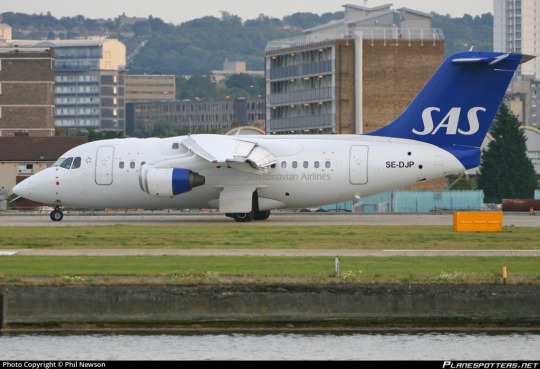
This isn't actually the modern livery, sorry. I'm a fraud. This is an anachronistic 2007 Avro RJ that apparently even back then had a livery basically all but identical to the modern one save for the lack of the SAS text. It still bodies Lufthansa and then some. I just had to find a place to slide it in because it's a very funny image that I love very much.
Legally known by the extremely catchy name “Scandinavian Airlines System Denmark-Norway-Sweden”, SAS was founded in 1946 as a consortium of the national carriers of Denmark, Norway, and Sweden. This makes it among the very few airlines to currently serve as the flag carrier of multiple countries.
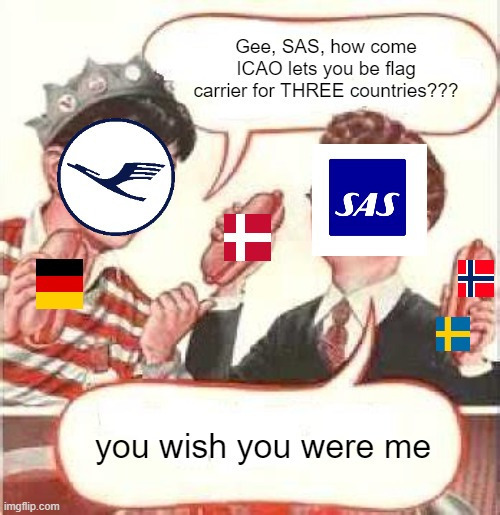
It’s been around for nearly 80 years, but it’s only had four liveries in that time. I mention these because I think it’s worth contrasting with Lufthansa, which bled off traits over the decades until it was nothing but a dry husk. Unlike the slowly putrefying decrepit corpse which is Lufthansa, SAS is a young adult trying to find her identity who can't stop dyeing her hair different colors and deciding she hates it. Let's talk about those phases, and where we ended up at the end of it all.
1946 - The Original

image: Bene Robió
This picture is of a modern plane, OY-KBO “Christian Valdemar Viking” (all SAS planes have names ending in ‘Viking’) wearing a retro livery, but it contains the only part of SAS’s original livery of any interest at all.

If we zoom in we can take a look at the end of the cheatline, where it morphs into the figurehead of a Viking longship. This is a nifty little touch that represents their national identity and is itself sleek and nicely designed.
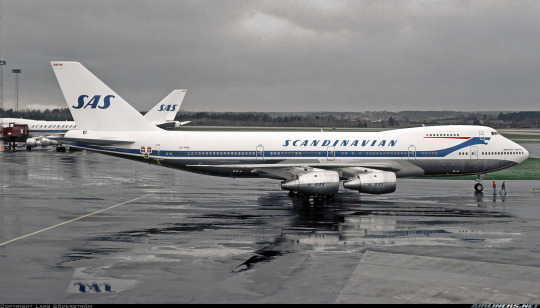
And it looks even better on the 747.
It’s also the only notable thing about this old livery, so it’s not worth lingering on for too long. I thought it was worth mentioning because it's neat, but this livery was literally adopted when they very first began flying - in 1946! At that point it was pretty rare to see airlines have any livery at all aside from their name painted on bare metal. This was actually above and beyond for the time.
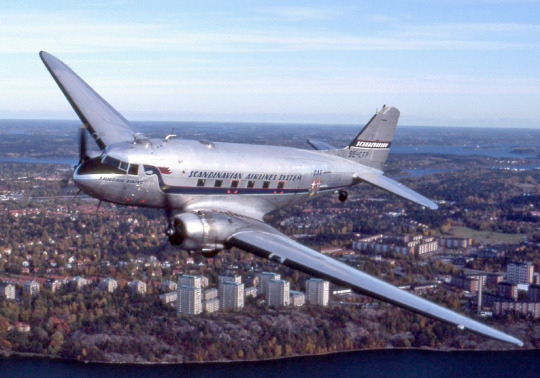
image: towpilot
It didn't look half bad on the DC-3, either. This was a consistently nice style and for its era I would say it was pretty good. But are we judging by the standards of the time? No.
So, for the time I would probably have given it a high grade. But it is not the time.
So I am giving it a C-.
There are still things to like about the longship design, don't get me wrong. But there is just literally nothing else going on, and it's not enough to have the only piece of your livery that's actually identifiable be so small and easy to miss.
1983 - Belly Stripes

image: Lars Wahlstrom
In 1983 they swapped to this livery, commonly known as “belly stripes”, designed by the iconic Landor Associates, prolific purveyors of liveries. It’s a pretty abrupt change, isn’t it? I like this livery, actually. It’s nice, if understated. The stripes are specifically the colors of the Norwegian, Swedish, and Danish flags. Apparently they worried the figurehead would be hard to understand (fair) and the association with Vikings might be bad optics (yet they continued to name their planes this way).
Like I said, it’s nice. It’s fine.
This, like the original livery, is something that can be evaluated by modern standards or by those of its time. In 1983 majority-white liveries weren’t as ubiquitous as they are now and planes still frequently had cheatlines and all-over color and even bare metal fuselages so the bare white plane with the tiny bit of color and the nice font was actually something of a statement. Even by modern standards it’s executed a lot nicer than many similar liveries, but the market is just so saturated that it only really works in the context of its time, I think. Having a plane be nearly all white is no longer an artistic choice. It's a non-choice. And that's the world I live in, and that has to color how I look at this. But all the same...I can't tear myself away from it. In photographs from the time it is as pristine as newly fallen snow.
So I'm giving it a B.
I like the belly stripes livery. It's a neat and unique way of showcasing the flags. It's cleanly executed. I like that the stripes are diagonal instead of straight and that they're aligned with the letters, which are also in a very nice typeface. I just wish it existed in a less Eurowhite-saturated environment where it could shine to its fullest.
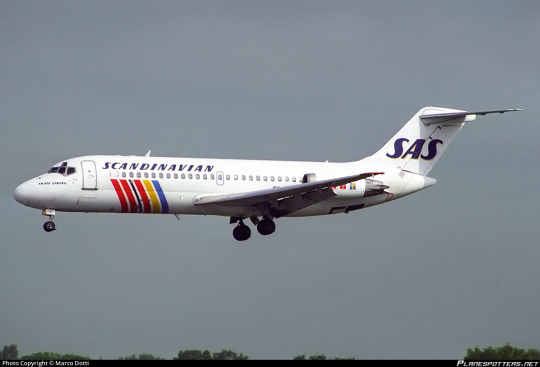
I somehow never noticed how adorably stubby the pre -30 DC-9 models were. Thankfully this has been remedied. Just look at her. Like a really round bird hopping through the air.
I think it’s interesting how, while Lufthansa slowly lost creative interest but only ever became a different design altogether in a sort of Ship of Theseus way, SAS fully overhauled their livery multiple times. They’re definitely trying to find something that works for them, regardless of the cost. They refuse to rest on their laurels. I admire that mindset, and it’s not ended badly so far.
And then it was 1998.
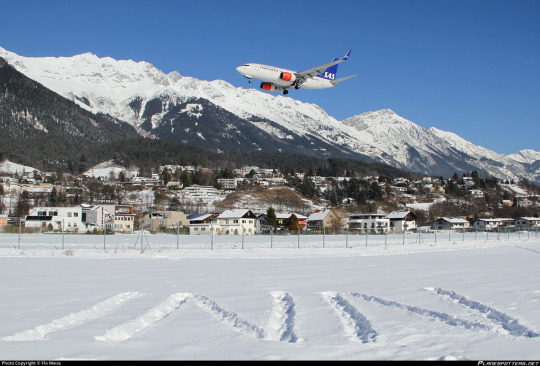
If you look very closely you can see something horrible in the distance.
No, okay. It can't be as bad as you're making it out to be, you say. And you are a fool for saying this.
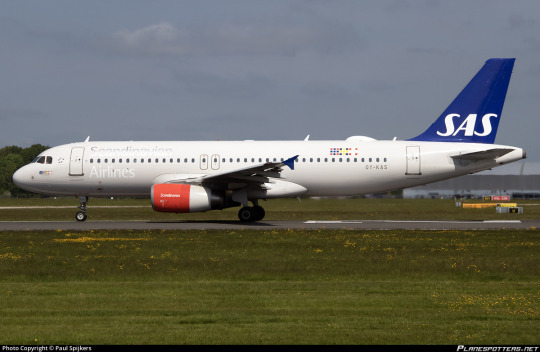
Oh no. Oh no. Sweetheart, what happened to you?
So, this is really really bad. Really really really bad. This looks like it was designed with the same philosophy I used to design original characters in middle school - oh, I like this color, let me add it without considering the overall balance or composition. This design was made by people who were paid to make it.
This has almost all the features I hate most in a livery, all the way up to the abrupt color transition at the tailfin, but an additional one: that absolute atrocity right at the front. If you’re confused what I’m referring to, I don’t blame you - they made it nearly invisible. If you squint very hard, though, you can see ‘SCANDINAVIAN’ above the windows and ‘AIRLINES’ below it, completely illegible due to being painted in a silver color barely darker than the main fuselage itself.

It looks amazingly funny with rear-mounted engines, though. That's her fanny pack.
All I can really say is: why. Why did you do this? Why.
I am actually somewhat ashamed of how little I noticed this when out in the wild. It’s a testament to the sheer saturation of mostly plain liveries with a hint of red and/or blue that this monstrosity blended into the background and evaded my notice. (And in my defense I’ve never been to one of their focus cities so sightings have only been in passing.)
This might sound harsh, but I'm about to say this and stand by it. Here is a better SAS livery from the same time period.
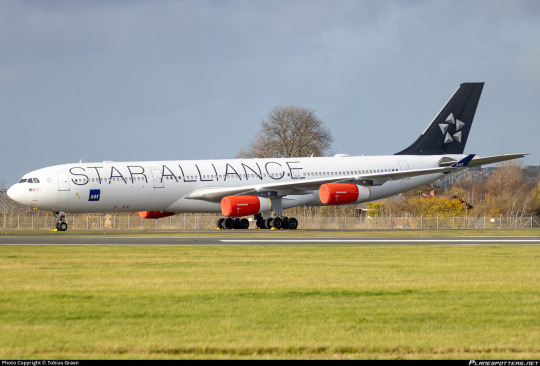
With the engine covers on it looks like one of those plastic tips they put on toy pistols. Also, doesn't keeping the red engine caps defeat the purpose if you also have red engines, since they're meant to be clearly visible so you don't accidentally try to use the plane with them on? Do they not have a different color available for red engined freaks? Many questions.
That's right, SAS's 1998-2019 livery fails the Star Alliance Test!
What is the Star Alliance Test, you ask? It's very simple. Star Alliance is an airline alliance - basically a club for the world's most elite carriers to hang out in and codeshare. The three major alliances all have special liveries that they might have a couple planes from each of their members wear.
I hate alliance liveries. I think airline alliances should be represented by a little symbol on the airline's standard livery, not the other way around. I would like to know what airline this plane is from before I know if it's a member of OneWorld or SkyTeam. And if I need to know that they usually have a symbol for the alliance somewhere on the plane anyway.

The Star Alliance logo on a SAS ATR 72, directly behind the cockpit window and in front of the door. If you really squint you can even see the words 'Star Alliance' written underneath it.
Star Alliance is my least favorite. SkyTeam's livery actually looks pretty good. OneWorld's is the ugliest at base, but it lets the airline keep some of its branding at the back of the plane, which makes me hate it less. So Star Alliance loses by default. (Let me know if you'd like a full review for these, though.)
The Star Alliance Test has exactly one question. Would I prefer that all this airline's planes were forcibly repainted into Star Alliance liveries instead of allowed to remain in their current state?
In this case, yes. I very much would. And that means there's only one grade I can give to this livery.

F. See me after class.

That's right. Fly away. Ideally to get repainted in something more presentable.
The 2019 Overhaul

(To clarify, when I compared Lufthansa to SAS in my post about them I did not want to imply that they literally copied SAS - their revised livery obviously came out a year earlier, and they were definitely developed privately around the same time to keep up with modernized trends surrounding livery - they’re just similar safe, non-revolutionary concepts that SAS executes a lot better.)
I don’t normally buy the whole ‘the darkness must come before the light’ line of thinking, but SAS clearly does. Because even here, in this abomination, are the building blocks for what would become something reasonably decent. And, in 2019, SAS made that happen.
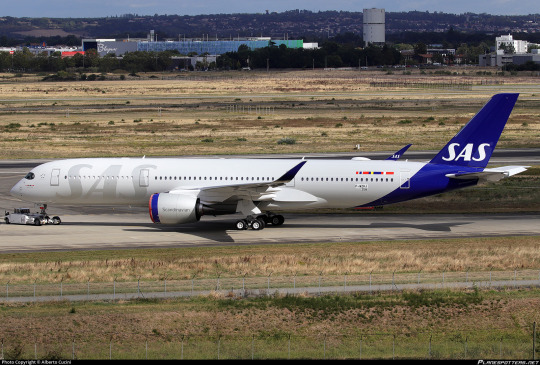
Those are engine covers, by the way. There's no red on the engines. There's actually a tasteful silver trim under there.
So, this is what we've achieved. At first glance, it looks pretty similar to Lufthansa, but the closer you examine it the clearer the differences become.
First, the white fuselage. Well, actually, that’s not the case for SAS. It looks white in bright sunlight, but it’s actually an off-white beige (Pantone 9083C). You can see that in this picture of an SAS plane parked next to a SWISS plane, and when you put a bunch of Scandinavians in crisp white shirts in front of it.
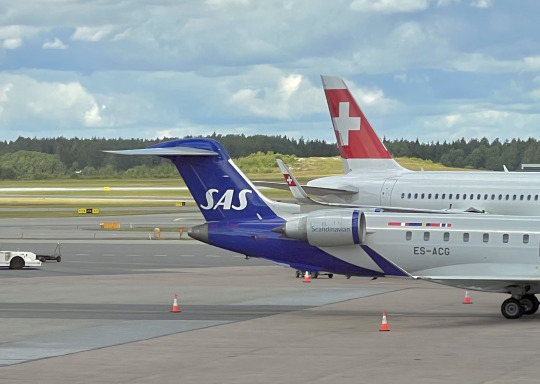
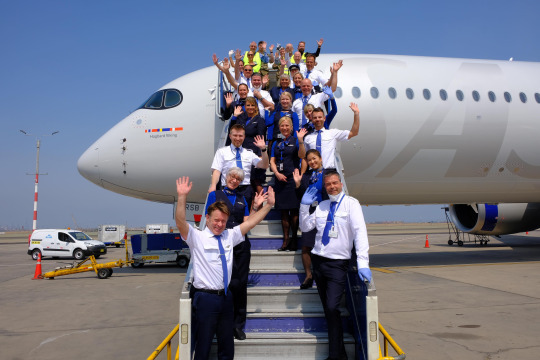
image source (left): Daniel Ross | image source (right): SAS
I mean, no, it’s not exactly neon pink or anything, but it’s still a noticeable change in tone relative to other planes, and that means it’s a decision someone made. And that makes me happy.
I think the world has begun to somewhat agree with me on the whole non-integrated-tail-colorblock being bad to look at, because SAS has also extended the stripe of blue down to loop under the rest of the fuselage. Honestly, if I were them I would have made it wider so it covered the full empennage on t-tail models, but that might make it look weird in its own way - I’m not here to design liveries, I’m here to complain about them. I just think it's still a bit too small to make the jet look fully balanced with the big SAS at the front.
The awful red engines have been replaced with a far more tasteful alternative - silver with a blue stripe at the front and silver trim on the very front edge. I like that a lot. No criticisms.
The silver text has been kept, but it’s been reduced from a bunch of small letters to just a very large SAS, which is a lot clearer even when in low contrast. It’s difficult to nail down my thoughts on this. Obviously it’s an improvement, and I wouldn’t want it to be removed entirely, and I’m not sure if a more solid, emphatic version, maybe in the same blue as the rest of the livery, would actually be better or not. I think I overall like the silver wordmark? As long as it’s not a really bad angle it’s visible enough, and it adds something a bit interesting. Even if it is illegible at least they also have the name on the tail. It probably helps that it’s only three letters long. Still, nobody is going to be confused about what airline this plane belongs to.

I think the wordmark looks its best on turboprops wearing the livery. I honestly feel like most good jet liveries look awkward on props and vice versa, but this transitions very well. Not many major airlines still fly props, and almost none of them adapt their liveries well to them, but the wordmark fills the space really nicely on the shorter fuselage of the ATR and the high wings break up the line in a way that looks pretty darn nice to me. More airlines need to fly props, and they need to take notes on how to make a livery work for them.
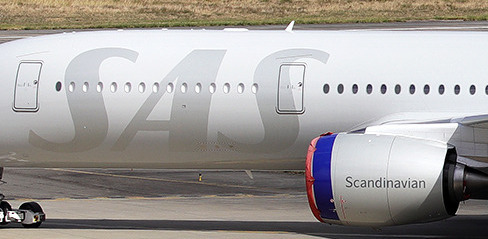
Aside from the too-small amount of blue, my one real outright complaint is the very small Noto Sans(?, unsure) ‘Scandinavian’ written on the engine nacelles. It feels pointless and looks out of place. It looks extra out of place because the rest of their livery is in Rotis semi-serif, and the combination really clashes. It’s a little baffling, because they certainly have the option of just using the SAS logo again - the only other place they use the full ‘Scandinavian’ is on the belly. My personal suggestion would be bringing back the longship figurehead for the engines, but that’s just me. It just looks more like a watermark than a design feature.
Look, I never said I loved the SAS livery, but someone clearly designed it. The implementation is still a little shaky in parts, as if the airline is regaining its footing after the red engine years, but it’s stumbling towards being good and it’s just short of the point where it can sit down and rest and reflect on its progress.
SAS gets an overall grade of C. Which is also what the GPA of the other three came out to, I think! My calculations are admittedly a bit improvised.
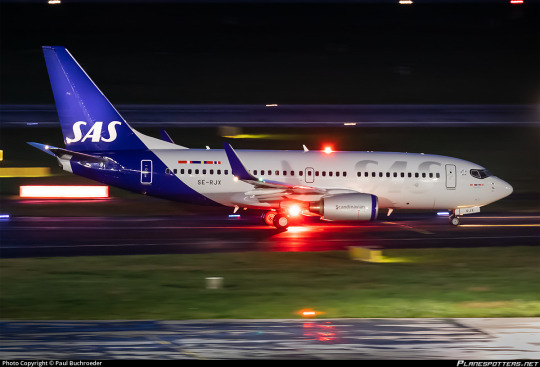
Makes Lufthansa look like chumps, though. I think we can all agree on that.
#tarmac fashion week#grade: c#grade: c-#grade: f#scandinavian airlines system#region: europe#region: northern europe#region: norway#region: sweden#region: denmark#landor portfolio#era: 2010s#deltalike#lufthansa declined#era: 2000s#era: 1990s#era: 1980s#era: 1970s#era: 1960s#era: 1950s#era: 1940s#era: 2020s#double sunrise#retired liveries#flag carriers
22 notes
·
View notes
Text
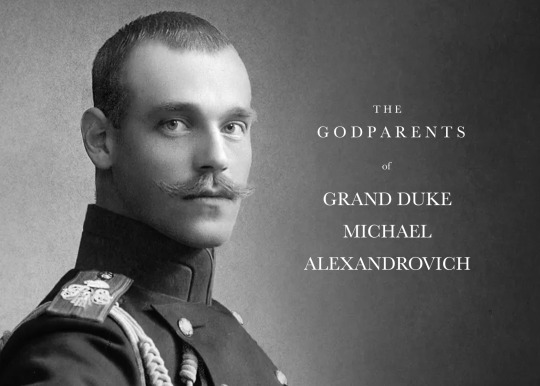
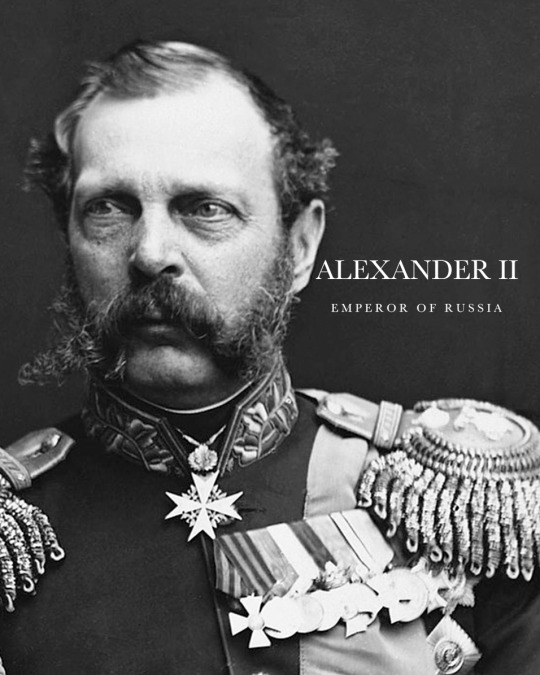
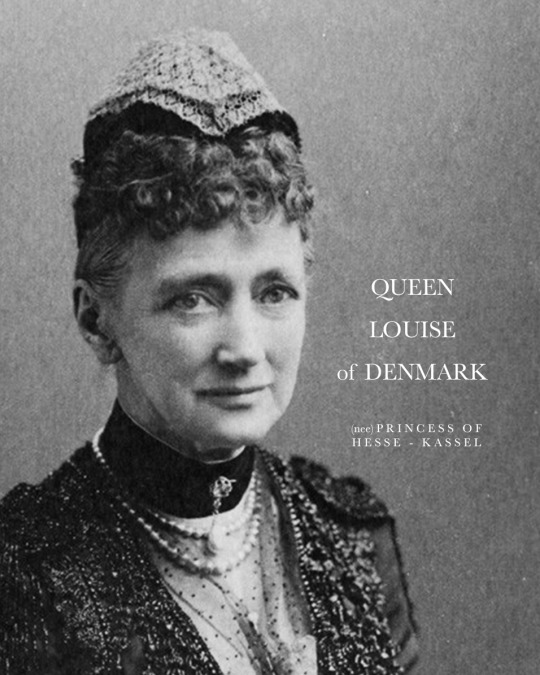

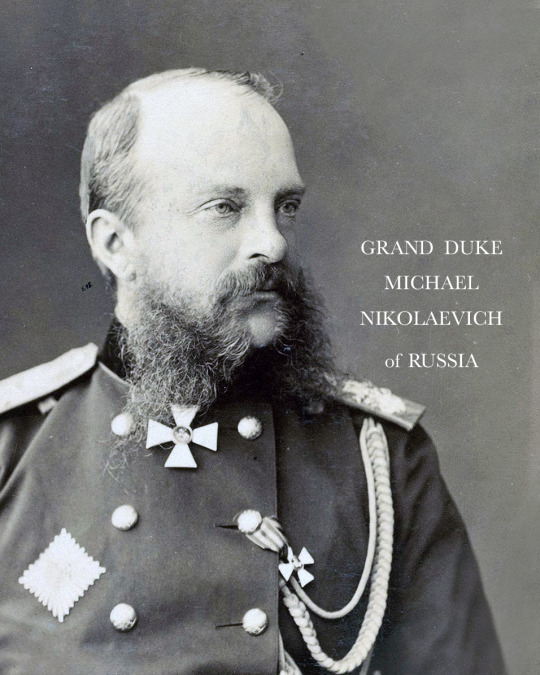
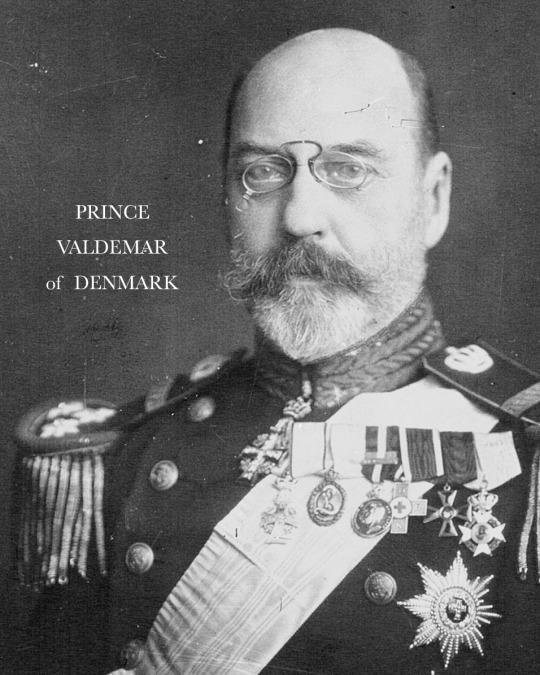
GODPARENTS OF GRAND DUKE MICHAEL ALEXANDROVICH
Grand Duke Michael Alexandrovich, the youngest son of Emperor Alexander III (then Tsesarevich) of Russia, was born on 4 December 1878 at the Anichkov Palace, Saint Petersburg, Russia. He was christened on 22 December at the Winter Palace, St. Petersburg, by the Confessor of Their Imperial Majesties. His godparents were:
ALEXANDER II, EMPEROR OF RUSSIA - the Russian Emperor, his grandfather, was one of his godparents. Alexander’s most significant reform as emperor was the emancipation of Russia’s serfs in 1861, for which he is known as Alexander the Liberator.
PRINCESS LOUISE OF HESSE-KASSEL, QUEEN CONSORT OF DENMARK - his maternal grandmother was one of his godparents. Louise became the Queen consort of Denmark upon her husband’s - King Christian IX - accession in 1863. Through her six children, she was a grandmother of not only the future Tsar of Russia (Nicholas II, Michael's older brother), but also that of King George V of the United Kingdom; King Constantine I of Greece; King Christian X of Denmark, and King Harken VII of Norway.
GRAND DUCHESS ALEXANDRA IOSIFOVNA - born a Princess of Saxe-Altenburg, Alexandra married Grand Duke Konstantin Nikolaevich, thus becoming Michael's great-aunt (by marriage), and one of his godparents. She was considered a beautiful woman, but plagued by insecurity, and her marriage to the grand duke had been largely unhappy - though the first sixteen of their marriage was a harmonious one.
GRAND DUKE MICHAEL NIKOLAEVICH - his great-uncle and namesake was listed as one of his godparents. A soldier for most of his adult life, he enjoyed a favourable relationship with the three last Emperors of Russia - his brother Alexander II; nephew Alexander III; and great-nephew Nicholas II.
PRINCE VALDEMAR OF DENMARK - his maternal uncle was also another of his godparents. He had a lifelong naval career, becoming the first president of the Seamen's Association of 1856.
Source
16 notes
·
View notes
Text

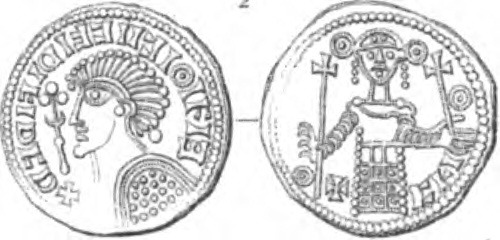
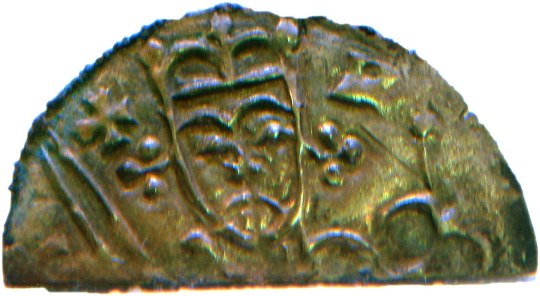
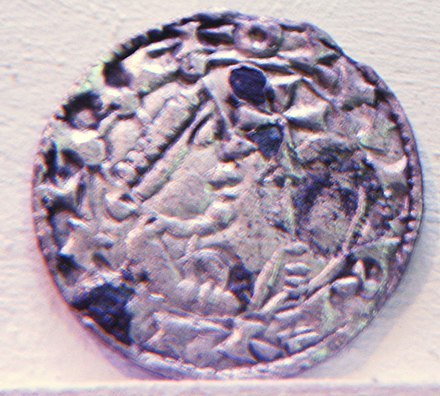

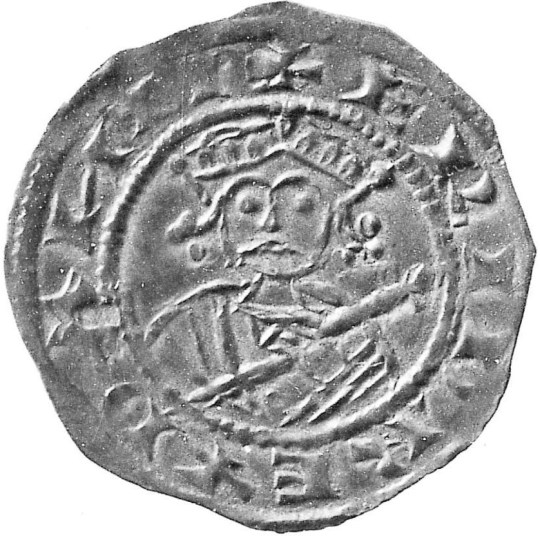

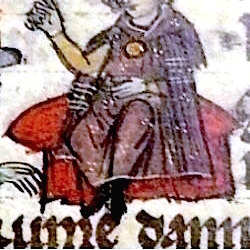
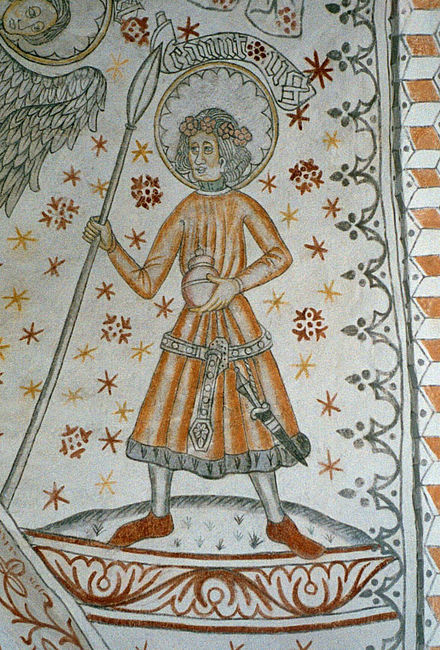
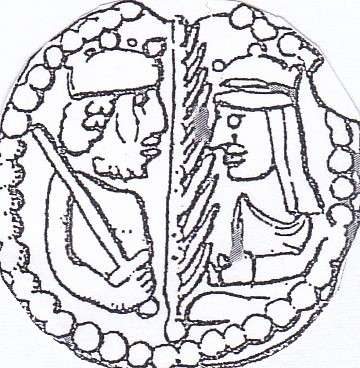
The Bastard Kings and their families
This is series of posts are complementary to this historical parallels post from the JON SNOW FORTNIGHT EVENT, and it's purpouse to discover the lives of medieval bastard kings, and the following posts are meant to collect portraits of those kings and their close relatives.
In many cases it's difficult to find contemporary art of their period, so some of the portrayals are subsequent.
1) Harald III of Denmark (c. 1040 – 1080), son of Sweyn II of Denmark and a concubine named Alvhild
2) Sweyn II of Denmark (c. 1019 –1076), son of Ulf Thorgilsson and Estrid Svendsdatter. Father of Harald III, Cnut IV, Niels I, Olaf I and Erik I
3) Niels I of Denmark (c. 1065 – 1134), son of Sweyn II of Denmark and a concubine
4) Olaf I of Denmark ( c. 1050 – 1095), son of Sweyn II of Denmark and a concubine
5) Cnut IV of Denmark (c. 1042 – 1086), son of Sweyn II of Denmark and a concubine
6) Erik I of Denmark (c. 1060 – 1103), son of Sweyn II of Denmark and a concubine
7) Erik II of Denmark ( c. 1090 – 1137), son of Erik I of Denmark and a concubine
8) Sweyn III of Denmark (c. 1125 – 23 October 1157), son of Erik II of Denmark and a concubine named Thunna
9) Cnut/Knut/Canute Lavard ( 1096 – 1131), son of Erik I of Denmark and his wife Boedil Thurgotsdatter
10) Valdemar I of Denmark (1131 –1182 ), son of Canute Lavard and his wife Ingeborg of Kiev: with his wife Sophia of Minsk (d. 1198), daughter of Volodar of Minsk and Richeza of Poland
#jonsnowfortnightevent2023#asoiaf#a song of ice and fire#echoes of the past#day 10#historical parallels#medieval bastard kings#bastard kings and their families#harald iii of denmark#harald hen#sweyn ii of denmark#niels i of denmark#olaf i of denmark#olaf hunger#cnut iv of denmark#canute the saint#erik i of denmark#erik evergood#erik ii of denmark#erik grathe#sweyn iii of denmark#canute lavard#valdemar i of denmark#canonjonsnow
8 notes
·
View notes
Note
Who was Queen Alexandra's favorite sister-in-law? That is, her brothers' wives
Hello anon! ☺
Queen Alexandra's favourite sister-in-law was most definitely Olga Constantinovna, the wife of her brother, King George I of the Helleness! Because they got along very well! Unlike Alexandra's relationship with one of her other sister-in-laws, Queen Lovisa of Denmark. And with her her youngest sister-in-law, Princess Marie d'Orléans, the wife or her brother, Prince Valdemar, she also got along with well, but their relationship wasn't as close as how her and Olga's relationship was, and i'm not quite sure why!

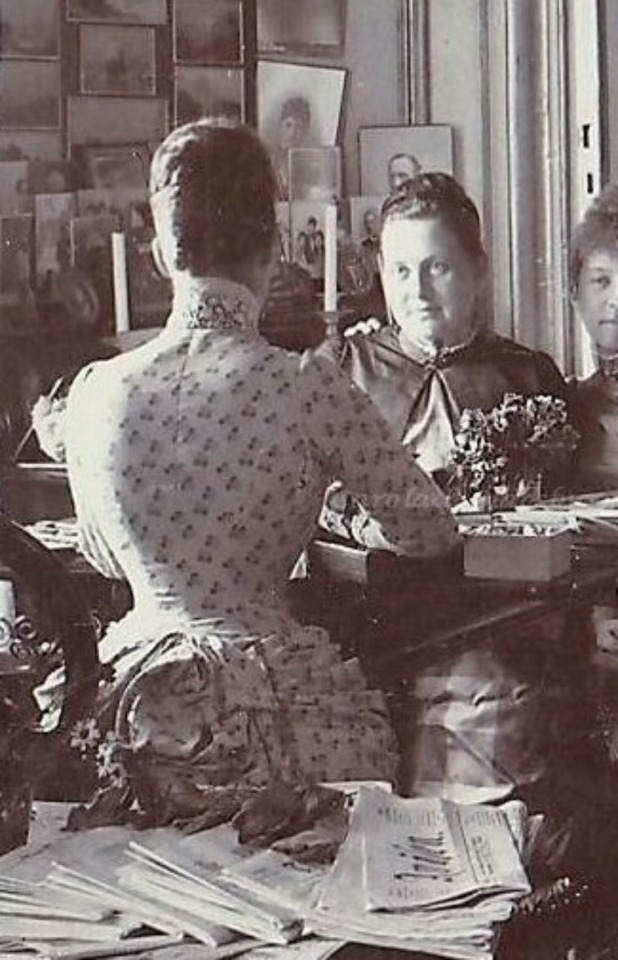
5 notes
·
View notes
Text
Fragments of fright (9)
From Richard Cavendish’s The Great Book of the Supernatural
THE MESSENGERS OF THE AFTERLIFE
Most people do not know when they will die - but a few of them are apparently warned of their imminent demise, thanks to the appearance of a ghost. This messenger of the afterlife can be a wraith, or a mysterious animal, and many families are proud of "owning" one.
The Hohenzollern dynasty, which reigned successively over the Brandeburg, Prussia and Germany (until the abdication of the kaiser Wilhelm II at the end of WWI) was boasting the existence of a "family ghost". This specter tied to their bloodline was a White Lady - a female ghost dressed in white, with a mourning armband, usually seen before the death of a member of the family, and appearing in the royal residences of Berlin or other Germany regions. It was believed that she might be the ghost of a princess of the 15th century, who was cruelly abused by her husband, who was a Hohenzollern. The dynasty of the Hesse of Darmstadt (Germany) also had its death herald - a Black Lady this time, in a mourning outfit, her face hidden by a dark veil. This ghost was supposed to be the archduchess Maria-Anna, wife of the archduke Ferdinand.
In the Danish royal family meanwhile, disasters were believed to be announced by the apparition at Gurre, south of Helsingor (a location that inspired the setting of Shakespeare's Hamlet), of the ghost of king Valdemar IV, who ruled on the Denmark in th 14th century and died at Gure in 1375. Another strange fact of the history of the Danish crown concerns the queen Astrid, killed in 1935 by a car accident. Some times after her death, she supposedly appeared before numerous people during a spiritism séance organized at Copenhague by the medium Einar Nielsen. A picture of her "manifestation" was apparently taken - but unfortunately, these kind of pictures are very easy to falsify and thus do not make an actual, solid proof of the ghost's apparition.
The Hasburgs, who ruled over the Austro-Hungarian Empire, were traditionally warned of any upcoming tragedy by the appearance of a group of great white birds circling in the sky. They were seen in 1889, soon before the double suicide of the heir-prince Rudolf and his mistress in Mayerling. Later, the emperor Franz-Josef the First also saw them in 1898, on the eve of the murder of his beloved Elisabeth. Finally, these sinister birds were spotted in 1914, before the Sarajevo attack which killed the archduke Franz-Ferdinand and caused World War I.
The most famous of these "messengers of death" is without a doubt the Irish banshee, which makes the pride and glory of the greatest and oldest families of the island. The banshees howls and wails with a melancholic voice through the night, crying the death of a family's member soon before it actually happens. She can appear as a beautiful maiden with a red shirt, or a green dress under a gray cloak ; or she can appear as an old hag. This "dual face", the beautiful maiden and the ugly hag, were the usual manifestations and appearances of the great goddesses of the pre-Christian Celtic religion, of which the banshee seems to be a remnant. It seems that getting rid of a banshee is hard, since there are records of them still wailing near the old domains of families that left Ireland a long time ago. A few years before the publication of this book, an American that was visiting the Aran island in the Galway bay, organized a party, with lot of music and dancing. As the night was ending, the young man returned home, playing accordion. The noise he made distressed the neighborhood, and someone had to go explain to a poor frightened old man that what he heard wasn't the screams of a banshee, but the sounds of a drunk playing very badly the accordion. Reassured, the old man knew three more weeks of peace... Until he heard the ACTUAL wails of the banshee, and soon after died.
According to a very old tradition, the death of the bishops of Salisbury is announced by the arrival of mysterious white birds flyig over the plain. Other bad omens - not necessarily meaning "death" - are the black dogs, or rather the black hounds, usually of an enormous size, that supposedly haunt the British countryside. Peel's castle, on the isle of Man, is the lair of one of those monsters, the Moddy Dhu, whose mere sight causes a person's death. You will also be doomed to die if you meet the Shriker dog, which hides in the Burnley cemetery (Lancashire). Many more sinisters black hounds are believe to wander on the paths leading to cemeteries. In a lot of popular beliefs and local folklore, dogs are associated with death, probably because in the distant past hungry dogs used to dig up corpses to eat them. There could also be something related to the strong belief that dogs are able to sense entities invisible to humans. Ghosts of dogs are particularly dreaded in the East-Anglia, where strikes the formidable Black Shuck, whose only eye shines in the darkness.
During World War II, an American air-pilot and his wife lived in Walberswick, in the Suffolk, and they had there a terrifying experience. During one whole night, an enormous black dog tried to enter in their house, and they only prevented it from doing so by piling up furniture in front of the door, that the animal nearly split open. At dawn, the beast left, but without leaving any prints in the mud surrounding the house. This event happened during a storm night - which reminds one of the old beliefs claiming that storms are caused by the mad run in the countryside of a pack of infernal hounds, whose howls causes death, madness and misfortune. In some regions, these hounds are led by the "Wild Hunter". In Denmark, it is king Valdemar that leads the pack, in Normandy the Devil himself ; in northern England it is "Gabriel's hounds" led by the Angel of Death, while in the Dartmoor the dogs follow sir Francis Drake riding a hearse. All these legends inspired without a doubt Conan Doyle when he wrote one of Sherlock Holmes' most famous adventures - The Hound of the Baskervilles.
#fragments of fright#supernatural#irish folklore#banshee#black hound#british folklore#white ladies#ghosts#danish legends#german legends
5 notes
·
View notes
Text
Holidays 4.18
Holidays
Adult Autism Awareness Day
Anal Sex Day (Jim Jeffries)
Army Day (Iran)
Banyan Tree Birthday Party (Maui, Hawaii)
Celebrate Ben Solo Day
Coma Patients’ Day (Poland
Friend’s Day (Brazil)
I Love CSU Day (Colorado)
International Amateur Radio Day
International Day For Monuments and Sites (UNESCO)
International Erasure T-Shirt Day
International Juggler's Day
International No Declaw Day
Invention Day (Japan)
Laundromat Day
National Columnists’ Day
National Exercise Day
National Financial Advisor Day
National Lineman Appreciation Day
National Lydia Day
National Send Nudes Day
National Sleep Apnea Awareness Day
National Transfer Money to Your Daughter’s Account Day
National Transgender HIV Testing Day
National Velociraptor Awareness Day
Newspaper Columnists' Day
Paul Revere Day
Pet Owners Independence Day
Piñata Day
Real People Day
Sleep Apnea Awareness Day
Smile Big and Say Hi For No Particular Reason Day
Superman Day
Tax Freedom Day
Third World Day
Ushibuka Haiya Matsuri (Dance Festival; Japan)
Victory Over the Teutonic Knights in the Battle of the Ice (Russia)
World Amateur Radio Day
World Artisan Day
World Heritage Day
World Trifle Day
Youth Homelessness Matters Day
Food & Drink Celebrations
Animal Crackers Day
World Food Travel Day
3rd Tuesday in April
Transportation Tuesday [3rd Tuesday]
Independence Days
Earth’s Kingdom (Declared; 2020) [unrecognized]
Pinang (Declared; 2018) [unrecognized]
Zimbabwe (from UK, 1980)
Feast Days
Agapitus (Christian; Saint)
Agia (Christian; Saint)
Apollonius the Apologist (Christian; Saint)
Bun-Bun Brothers’ Day (Muppetism)
Carista: Day of Peace in the Family (Pagan)
Corebus (Christian; Saint)
Cyril VI of Constantinople (Eastern Orthodox Church)
Eleutherius and Antia (Christian; Saint)
Festival of Matsu (a.k.a. Mazu; Taoist Sea Goddess)
Galdino della Sala (a.k.a. Galdin; Christian; Saint)
Lady Macbeth Day (Church of the SubGenius; Saint)
Laserim, Bishop of Laighlin, Ireland (Christian; Saint)
Max Weber (Artology)
Molaise of Leighlin (Christian; Saint)
Nihilism Day (Pastafarian)
Perfectus (Christian; Saint)
Plato of Sakkoudion (Christian; Saint)
The Underlings (Muppetism)
Vitruvius (Positivist; Saint)
Lucky & Unlucky Days
Taian (大安 Japan) [Lucky all day.]
Tycho Brahe Unlucky Day (Scandinavia) [18 of 37]
Unglückstage (Unlucky Day; Pennsylvania Dutch) [15 of 30]
Premieres
Absolute Beginners (Film; 1986)
Alice’s Circus Dance (Disney Cartoon; 1927)
Apes of Wrath (WB MM Cartoon; 1959)
Baggage Buster (Disney Cartoon; 1941)
Barnyard Olympics (Disney Cartoon; 1932)
Forgetting Sarah Marshall (Film; 2008)
Gorky Park, by Martin Cruz Smith (Novel; 1981)
Holes (Film; 2003)
Legend (Film; 1986)
Mare of Easttown (TV Series; 2021)
Muscle Tussle (WB MM Cartoon; 1953)
The Razor’s Edge, by W. Somerset Maugham (Novel; 1944)
The Simple Things (Disney Cartoon; 1953)
Straight Shooters (Disney Cartoon; 1947)
Teen Titans: The Judas Contract (WB Animated Film; 2017)
Three Little Wolves (Disney Cartoon; 1936)
Winged Migration (Documentary Film; 2003)
Today’s Name Days
Werner, Wigbert (Austria)
Viktor, Viktoriya (Bulgaria)
Atanazija, Eusebije, Hermogen, Roman (Croatia)
Valérie (Czech Republic)
Eleutherius (Denmark)
Valdek, Valdeko, Valdemar, Valdo, Valdu, Valdur, Valmar, Valmer, Voldemar, Volli, Volmer (Estonia)
Valdemar, Valto (Finland)
Parfait (France)
Werner, Wigbert (Germany)
Andrea, Ilma (Hungary)
Galdino (Italy)
Dana, Hildegarde, Jadviga, Laura, Nameisis (Latvia)
Apolonijus, Eitvilas, Girmantė, Undinė (Lithuania)
Eilen, Eilert (Norway)
Apoloniusz, Bogusław, Bogusława, Flawiusz, Gościsław (Poland)
Ioan (Romania)
Valér (Slovakia)
Perfecto (Spain)
Valdemar, Volmar (Sweden)
Anthea, Ayana, Ayanna, Warner, Werner (USA)
Today is Also…
Day of Year: Day 108 of 2024; 257 days remaining in the year
ISO: Day 2 of week 16 of 2023
Celtic Tree Calendar: Saille (Willow) [Day 3 of 28]
Chinese: Second Month 2 (Gui-Mao), Day 28 (Bing-Wu)
Chinese Year of the: Rabbit 4721 (until February 10, 2024)
Hebrew: 27 Nisan 5783
Islamic: 27 Ramadan 1444
J Cal: 17 Aqua; Threesday [17 of 30]
Julian: 5 April 2023
Moon: 3%: Waning Crescent
Positivist: 24 Archimedes (4th Month) [Vitruvius]
Runic Half Month: Man (Human Being) [Day 9 of 15]
Season: Spring (Day 30 of 90)
Zodiac: Aries (Day 29 of 30)
2 notes
·
View notes
Text
Holidays 12.11
Holidays
Anniversary of the Statue of Westminster (Canada)
Aurora Borealis Day
Bharathiyar Day (India)
Constitution Day (Thailand)
Day of Independent Bookstores (Chile)
Establishment of Kurdish Women’s Union Day (Iraqi Kurdistan)
Fourth Republic Day (Madagascar)
GRMA Day (Ireland)
Hi Neighbor Day
Holiday Food Drive for Needy Animals Day
Human Rights and Peace Day (Kiribati)
International Knitters Day
International Mountain Day (UN)
International Tweet Grace Paley Day
Jack Frost Day
Kaleidoscope Day
Middle Finger Day
National App Day
National Caesar Day
National Jon Day
National Knitters Day
National Sobriety Day
National Stretching Day
National Tango Day (Argentina)
Pampanga Day (Philippines)
Psycho Day
Remembrance Day of Llywelyn the Last (Wales)
Scaling Day (aka Escalade; Switzerland)
Sugar Maple Day (French Republic)
UNICEF Day
World’ Children’s Fund Day
Food & Drink Celebrations
National Have a Bagel Day
National Noodle Ring Day
National Teriyaki Chicken Day
2nd Monday in December
Green Monday [2nd Monday]
National Tree Planting Day (Malawi) [2nd Monday]
Independence Days
South Africa (from UK, 1931)
Upper Volta (from France, 1958)
Indiana Statehood Day (#19; 1816)
Proclamation of Independence Day (Burkina Faso)
Feast Days
Agonalia (Ancient Rome) [also 1.9]
Cian (Christian; Saint)
Damasus I, Pope (Christian; Saint)
Daniel the Stylite (Christian; Saint)
Day of the Snow Queen (a.k.a. Lady Winter; Pagan)
Feast of Sekhmet, Bast and Ra (Ancient Egypt)
Festival for Diva Palatua (Guardian of Palatine Hill; Ancient Rome)
Hanukkah Day #4 (Judaism) [thru Dec. 15th]
International Shareware Day (a.k.a. Shareware Piracy Day; Pastafarian)
Kagyed Dance (Sikkim, India)
Maravillas de Jesús (Christian; Saint)
Mark Toby (Artology)
Pen (Christian; Saint)
Peris (Christian; Saint)
Roddenberry Day (Church of the SubGenius; Saint)
Sabinus of Piacenza (Christian; Saint)
Septimonia (Honoring Seven Hills of Rome; Ancient Rome)
The Shreepret Service (Muppetism)
Victoricus, Fuscian, and Gentian (Christian; Martyrs)
Wallis (Positivist; Saint)
Lucky & Unlucky Days
Tomobiki (友引 Japan) [Good luck all day, except at noon.]
Tycho Brahe Unlucky Day (Scandinavia) [36 of 37]
Unglückstage (Unlucky Day; Pennsylvania Dutch) [29 of 30]
Premieres
Amadeus, by Peter Shaffer (Play; 1980)
The Big Short (Film; 2015)
The Cliff Hanger or Taken for Granite (Rocky & Bullwinkle Cartoon, S2, Ep. 79; 1960)
Empty Socks (Disney Cartoon; 1927)
Falling In Love Again, recorded by Marlene Dietrich (Song; 1939)
A Few Good Men (Film; 1992)
Guess Who’s Coming to Dinner (Film; 1967)
Highway Runner (WB LT Cartoon; 1965)
Hook (Film; 1991)
Invictus (Film; 2009)
John Lennon/Plastic Ono Band, by John Lennon (Album; 1970)
Magnum P.I. (TV Series; 1980)
The Muppet Christmas Carol (Film; 1992)
The Princess and the Frog (Animated Disney Film; 2009)
Rocky and the Rock or Take for Granite (Rocky & Bullwinkle Cartoon, S4, Ep. 185; 1962)
Rushmore (Film; 1998)
Scoop, by Evelyn Waugh (Novel; 1938)
Shakespeare in Love (Film; 1998)
Sheep Ahoy (WB MM Cartoon; 1954)
A Small Matter of Pygmies (Animated TV Show;Jonny Quest #13; 1964)
Star Trek: Insurrection (Film; 1998)
Supersonic Boom or The Old Mount’s A-Moverin’ (Rocky & Bullwinkle Cartoon, S2, Ep. 80; 1960)
The Three Lives of Thomasina (Film; 1963)
Time Out of Joint, by Philip K. Dick (Novel; 1959)
Trouble Upstairs ir Bats in the Boris (Rocky & Bullwinkle Cartoon, S4, Ep. 186; 1962)
Wall Street (Film; 1987)
Wool: Casting Off, by Hugh Howey (Novel; 2011)
Today’s Name Days
Arthur, Damasus, Tassilo (Austria)
Artur, Damaz, Damir, Hugolin (Croatia)
Dana (Czech Republic)
Damascus (Denmark)
Daaniel, Taaniel, Taano, Tanel, Tani, Tanno (Estonia)
Daniel, Daniela, Taneli, Tatu (Finland)
Daniel (France)
Arthur, Damasus, Tassilo (Germany)
Árpád (Hungary)
Damaso (Italy)
Valdemars, Valdis, Voldemārs (Latvia)
Aistis, Dovydas, Tautvaldė (Lithuania)
Dan, Daniel (Norway)
Damazy, Daniela, Julia, Stefan, Waldemar, Wojmir (Poland)
Daniil, Luca (Romania)
Hilda (Slovakia)
Dámaso (Spain)
Daniel, Daniela (Sweden)
Art, Arthur, Arthurine, Arturo, Javon, Jevon, Sage (USA)
Today is Also…
Day of Year: Day 345 of 2024; 20 days remaining in the year
ISO: Day 1 of week 50 of 2023
Celtic Tree Calendar: Ruis (Elder) [Day 14 of 28]
Chinese: Month 10 (Gui-Hai), Day 29 (Gui-Mao)
Chinese Year of the: Rabbit 4721 (until February 10, 2024)
Hebrew: 28 Kislev 5784
Islamic: 28 Jumada I 1445
J Cal: 15 Zima; Oneday [15 of 30]
Julian: 28 November 2023
Moon: 2%: Waning Crescent
Positivist: 9 Bichat (13th Month) [Wallis]
Runic Half Month: Jara (Year) [Day 1 of 15]
Season: Autumn (Day 79 of 89)
Zodiac: Sagittarius (Day 20 of 30)
Calendar Changes
Jara (Year) [Half-Month 24 of 24; Runic Half-Months] (thru 12.24)
1 note
·
View note
Text

Dagmar of Bohemia (c. 1186 – 24 May 1212 in Ribe) was Queen of Denmark as the first spouse of King Valdemar II. She was the daughter of King Ottokar I of Bohemia and his first wife, Adelaide of Meissen.
1 note
·
View note
Text
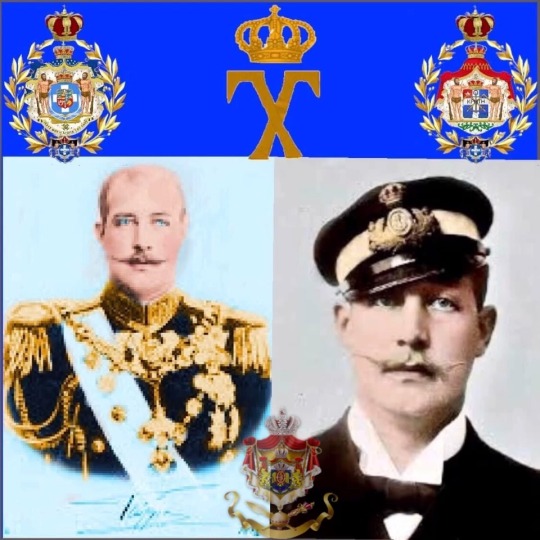









Today is 154 years since the birth of HRH Prince George of Greece and Denmark High Commissioner of Crete (24 June 1869 – 25 November 1957) was the second son and child of George I of Greece and Olga Konstantinovna of Russia.He served as high commissioner of the Cretan State during its transition towards independence from Ottoman rule and union with Greece.
From 1883, George lived at Bernstorff Palace near Copenhagen with Prince Valdemar of Denmark, his father's younger brother. The queen had taken the boy to Denmark to enlist him in the Danish royal navy and consigned him to the care of Valdemar, who was an admiral in the Danish fleet. Feeling abandoned by his father on this occasion, George would later describe to his fiancée the profound attachment he developed for his uncle from that day forward.
In 1891, George accompanied his cousin the Tsesarevich Nicholas on his voyage to Asia, and saved him from an assassination attempt in Japan, in what became known as the Ōtsu Incident.
George, along with his brothers Constantine and Nicholas, were involved with the organization of the 1896 Summer Olympics in Athens. George served as president of the Sub-Committee for Nautical Sports. He served as a judge for the weightlifting competition, and demonstrated his strength by clearing the weights at the end of the event.
Following a Parisian luncheon between King George and Prince Roland Bonaparte in September 1906 during which the king agreed to the prospect of a marriage between their children, George met Roland's daughter,on 19 July 1907 at the Bonapartes' home in Paris.A member of one of the non-imperial branches of the Bonaparte dynasty, she was an heiress to the Blanc casino fortune through her mother.
George wed Marie civilly in Paris on 21 November 1907, and in a Greek Orthodox ceremony in Athens the following December.
Prince George and Princess Marie had two children,
HRH Prince Petros of Greece and Denmark
HRH Princess Eugenia of Greece and Denmark.
On 21 November 1957 Princess Marie and her husband celebrated their golden wedding anniversary. Prince George died 25 November 1957, aged eighty-eight, the longest-living dynast of the House of Oldenburg of his generation. He was buried at Tatoi Royal Cemetery with Danish and Greek flags, his wedding ring, a lock of Valdemar's hair, a photo of Valdemar, and earth from Bernstorff.Prince George was the last living child of King George and Queen Olga.
Georgioupolis, a coastal resort between Chania and Rethimno, was named after Prince George.
Σήμερα συμπληρώνονται 154 χρόνια από τη γέννηση Της ΑΒΥ Πρίγκιπα Γεώργιου της Ελλάδας και Δανίας Ύπατος Αρμοστής της Κρήτης (24 Ιουνίου 1869 – 25 Νοεμβρίου 1957).
Ο Γεώργιος ήταν ο δεύτερος γιος και παιδί του Γεωργίου Α΄ της Ελλάδας και της Όλγας Κωνσταντίνοβνα της Ρωσίας. Υπηρέτησε ως ύπατος αρμοστής της Κρητικής Πολιτείας κατά τη μετάβασή της προς την ανεξαρτησία από την Οθωμανική κυριαρχία και την ένωση με την Ελλάδα.
Από το 1883, ο George ζούσε στο παλάτι Bernstorff κοντά στην Κοπεγχάγη με τον πρίγκιπα Valdemar της Δανίας, τον μικρότερο αδερφό του πατέρα του. Η βασίλισσα είχε μεταφέρει το αγόρι στη Δανία για να το στρατολογήσει στο βασιλικό ναυτικό της Δανίας και το έδωσε στη φροντίδα του Βαλντεμάρ, ο οποίος ήταν ναύαρχος του δανικού στόλου. Νιώθοντας εγκαταλελειμμένος από τον πατέρα του σε αυτήν την περίπτωση, ο Γεωργιος θα περιέγραφε αργότερα στην αρραβωνιαστικιά του τη βαθιά προσκόλληση που ανέπτυξε για τον θείο του από εκείνη την ημέρα και μετά.
Το 1891, ο Γεώργιος συνόδευσε τον ξάδερφό του τον Τσεσαρέβιτς Νικόλαο στο ταξίδι του στην Ασία, και τον έσωσε από μια απόπειρα δολοφονίας στην Ιαπωνία, σε αυτό που έγινε γνωστό ως το περιστατικό του Οτσού.
Ο Γιώργος, μαζί με τα αδέρφια του Κωνσταντίνο και Νικόλαο, συμμετείχαν στη διοργάνωση των Θερινών Ολυμπιακών Αγώνων του 1896 στην Αθήνα. Ο Γιώργος διετέλεσε πρόεδρος της Υποεπιτροπής Ναυτικών Αθλητισμού. Υπηρέτησε ως κριτής για τον αγώνα άρσης βαρών και έδειξε τη δύναμή του καθαρίζοντας τα βάρη στο τέλος του αγώνα.
Μετά από ένα παρισινό γεύμα μεταξύ του βασιλιά Γεωργίου και του πρίγκιπα Ρόλαντ Βοναπάρτη τον Σεπτέμβριο του 1906 κατά το οποίο ο βασιλιάς συμφώνησε στην προοπτική ενός γάμου μεταξύ των παιδιών τους, ο Γεώργιος συνάντησε την κόρη του Ρολάνδου, στις 19 Ιουλίου 1907 στο σπίτι των Βοναπάρτη στο Παρίσι. από τους μη αυτοκρατορικούς κλάδους της δυναστείας των Βοναπάρτη, ήταν κληρονόμος της περιουσίας του καζίνο Blanc μέσω της μητέρας της.
Ο Γεώργιος παντρεύτηκε πολιτικά τη Μαρί στο Παρίσι στις 21 Νοεμβρίου 1907 και σε μια ελληνορθόδοξη τελετή στην Αθήνα τον επόμενο Δεκέμβριο.
Ο πρίγκιπας Γεώργιος και η πριγκίπισσα Μαρία είχαν δύο παιδιά,
ΑΒΥ Πρίγκιπας Πέτρος της Ελλάδας και της Δανίας
ΑΒΥ Πριγκίπισσα Ευγενία της Ελλάδας και της Δανίας.
Στις 21 Νοεμβρίου 1957 η πριγκίπισσα Μαρία και ο σύζυγός της γιόρτασαν τη χρυσή επέτειο του γάμου τους. Ο πρίγκιπας Γεώργιος πέθανε στις 25 Νοεμβρίου 1957, σε ηλικία ογδόντα οκτώ, το μακροβιότερο μέλος του Οίκου Όλντενμπουργκ της γενιάς του. Τάφηκε στο Βασιλικό Νεκροταφείο Τατοΐου με δανικές και ελληνικές σημαίες, τη βέρα του, μια τούφα από τα μαλλιά του Βαλντεμάρ, μια φωτογραφία του Βάλντεμαρ και γη από το Μπέρνστορφ. Ο Πρίγκιπας Γεώργιος ήταν το τελευταίο εν ζωή παιδί του Βασιλιά Γεωργίου και της Βασίλισσας Όλγας.
Η Γεωργιούπολη, ένα παραθαλάσσιο θέρετρο μεταξύ Χανίων και Ρεθύμνου, πήρε το όνομά του από τον Πρίγκιπα Γεώργιο.
#kingconstantine#danishroyalfamily#crownprincepavlos#queenannemarie#greek royal family#house of romanov#greekroyals#crownprincessmariechantal#danishroyals#princeconstantinealexios
0 notes
Text
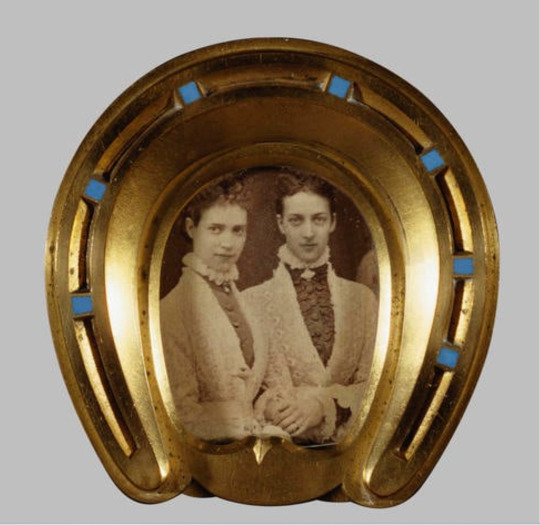

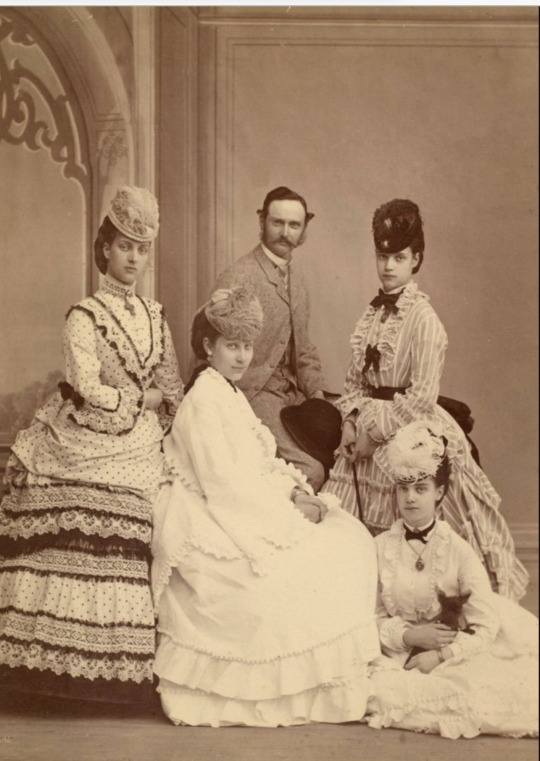


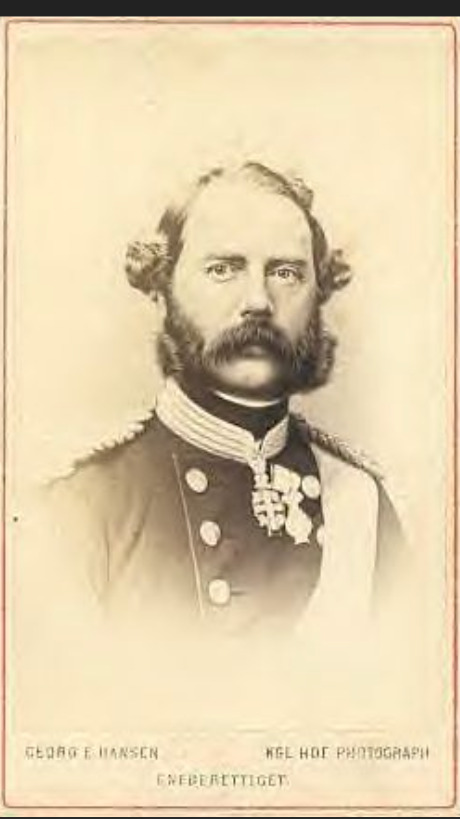
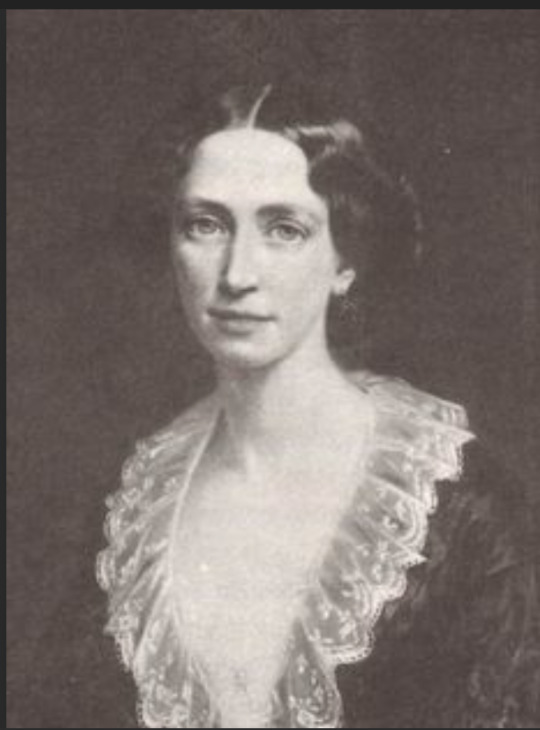
Photographs: 1. Alexandra and her younger sister Dagmar; 2. The Danish Royal Family: From left to right: Dagmar (Marie Feodorovna), the little one by Dagmar's knee should be Prince Valdemar, the youngest; standing in back of the child, the oldest male, future King Frederick VIII; King Christian the IX is in the middle, standing in back of his wife Louise; standing by Louise is Princess Thyra; next to Thyra is the future Queen Alexandra; standing in the back, between Thyra and Alexandra, is George, the future King of the Helenes; 3. In this picture, a very beautiful Princess Alexandra; sitting by her is Princess Lovisa of Sweden, the wife of Frederick, who is standing by her; next to Frederick is Dagmar, and sitting on the floor holding a little dog is Thyra; 4. Christian IX 5. Queen Louise; 6. Christian IX 7. Queen Louise
The Danish Royal Family
King Christian IX of Denmark (1818 - 1906) and Queen Louise of Denmark (1817 - 1898) nee Louise of Hesse-Kessel and their children
This Wednesday, a little love for the Danish Royal Family, who gave us Queen Alexandra of England, one of the most beautiful queens to sit on a throne since photography was created (no makeup, Botox, fillers, plastic surgery), and her sister, Empress Maria Feodorovna (Princess Dagmar of Denmark) one of the prettiest and most beloved Empresses of all the Russias.
So where did all that beauty come from? Most of us have seen photographs of Christian IX and Queen Louise in their older years. At least I had not seen them young. I looked for some photos, and I am including them here. Both of them were good-looking. Louise had a pretty face and beautiful eyes. And so did Christian! He was not bad-looking at all, tall and slim. The little cleft on Alexandra's chin apparently came from her father. The girls had good genes.
The House of Glücksburg, to which Christian IX and Queen Louise belonged, is a collateral branch of the German House of Oldenburg. Its members have reigned at various times in Denmark, Norway, Sweden, Iceland, Greece, and several northern German states.
King Christian IX and Queen Louise were double cousins. King Christian was called the "father-in-law of Europe" on account of the marriage of his children to foreign princes and princesses.
Current monarchs King Charles III of the United Kingdom, Queen Margrethe II of Denmark, and King Harald V of Norway, as well as former queens consort Ann Marie of Greece and Sofia of Spain, are patrilineal members of cadet branches of the House of Glücksburg. (gcl)
#romanov dynasty#danish royal family#Queen Louise of denmark#Louise of Hesse-Kessel#King Christian IX of Denmark#Princess Alexandra of Denmark#Princess Dagmar of Denmark#Princess Lovisa of Sweden and Norway#Thyra#Crown Princess of Hanover
18 notes
·
View notes
Text
I didn’t learn my grandfather’s birth name until I began researching the family many years after his death. I knew him as Walter A. Balling. He was born in Denmark in 1889 and named Valdemar Arnbjørn Griffenfeldt Dagobert Tordenskjod Balling. He came to the US at 21, and joined the US Army as soon as he could. He served for many years including in World War I.
A beautiful memorial page was established for him by Charlotte Raley McConaha, who lives the belief that no one should be forgotten.
In grateful memory of all who have served our country throughout our long history. Thank you.
#myimmigrantfamily
1 note
·
View note